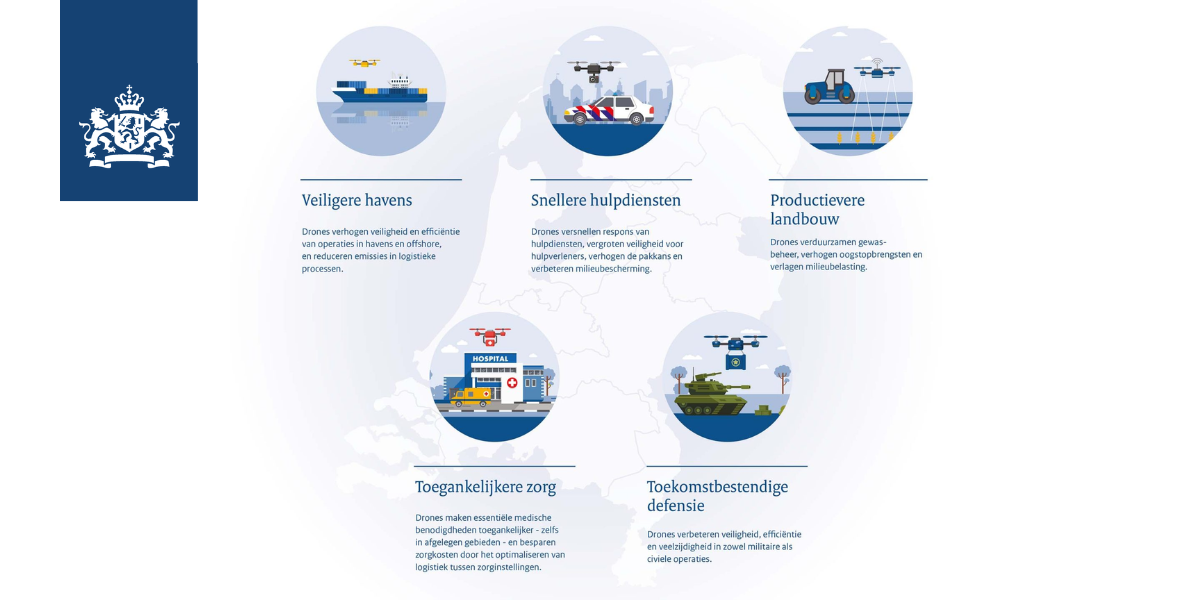How Project CAELUS Set the Stage for Drone-Enabled Healthcare and Airspace Modernisation in the UK
Over the past four years, Project CAELUS has emerged as a pioneering blueprint for integrating drones into the UK's low-level airspace. The initiative, supported by UKRI's Future Flight Challenge and led by NATS Services (the UK's leading provider of air traffic control services) alongside 15 other consortium partners, has not only laid the technical groundwork for beyond visual line of sight (BVLOS) drone operations but also redefined the collaborative, technological, and regulatory landscape needed to commercialise drone use in healthcare and beyond.
Drones for Healthcare: A Working Prototype
At its core, Project CAELUS (Care & Equity – Healthcare Logistics UAS Scotland) set out to prove that drones could safely transport critical medical supplies such as blood, organs, and medicines between NHS Scotland sites. Live trials were conducted across multiple health boards, with drones operating in Temporary Danger Areas (TDAs). The project confirmed that drone deliveries are technically feasible and can integrate with existing healthcare logistics.
But the trials went further: they also tested drone operations in complex environments near busy airports and demonstrated that such flights could be deconflicted with traditional air traffic. These findings have helped establish a base case for more flexible airspace models like Transponder Mandatory Zones (TMZs).
The Concept of Operations (CONOPs): A Regulatory Foundation
One of Project CAELUS’ most important outcomes is the development and validation of a comprehensive Concept of Operations (CONOPs). This living document outlines how integrated BVLOS drone operations can evolve over time, ensuring safe interaction between crewed and uncrewed aircraft. It has become a cornerstone in future airspace planning, with regulators like the Civil Aviation Authority (CAA) actively engaged throughout its development.
The CONOPs addressed over 120 specific requirements during simulations and trials, from contingency landing procedures to real-time weather data integration, and proved critical in preparing for more flexible and scalable airspace use.
Bridging the Gap with the Master Control Room
Central to CAELUS was the development of a Master Control Room (MCR) prototype – a digital interface that allows real-time oversight, flight plan authorisation, deconfliction, and integration of drone telemetry into traditional Air Traffic Management (ATM) systems. The MCR proved essential in supporting a new role: the Airspace Manager, tasked with maintaining safety in nominal and non-nominal conditions.
By integrating data from UTM (Uncrewed Traffic Management) service providers, the MCR successfully demonstrated that drones and aircraft can safely share the same airspace, paving the way for more automated systems in the future.
Digitalisation as the Catalyst for Integration
Digital airspace services have emerged as a prerequisite for drone integration. The CAELUS roadmap revealed that digital flight planning, surveillance, and cloud-based communications are key to managing traffic in lower airspace. As larger drones with better connectivity become more common, their ability to assist in real-time airspace management will further support deconfliction and improve situational awareness for all users.
Looking Beyond CAELUS: Towards Commercialisation
Now that the Future Flight Challenge has concluded, stakeholders are calling for a clear regulatory path from trial to routine operation. With over 30,000 registered commercial drone pilots in the UK and increasing demand from healthcare, logistics, and infrastructure sectors, the push is on to move beyond pilot projects.
Key recommendations from NATS include:
- Regulatory progression: from TDAs to integrated, flexible-use airspace.
- Scalable digital infrastructure: based on cloud-enabled platforms and shared real-time data.
- Strong partnerships: to support a coordinated end-to-end drone service ecosystem, ideally managed by a single systems integrator.
As Mark Balsdon, Head of New Airspace Users Accounts at NATS, noted: "We now have a baseline that we believe can work and scale. The next step is to put it into commercial operation."
A Global Outlook
Beyond the UK, Project CAELUS has already begun to influence airspace integration strategies in the Asia Pacific and Middle East regions. The validated CONOPs, scalable architecture, and regulatory insights from CAELUS provide a valuable export product for countries looking to modernise their low-level airspace.
Richard Ellis, NATS' New Airspace Users Director, summed it up: “Project CAELUS has demonstrated the safe and efficient integration of drones into UK airspace. We are now eager to continue working with industry and regulators to turn these insights into real-world commercial drone operations."
With the technical architecture in place and early regulatory support secured, the question is no longer if drones can be integrated into national airspace – but how soon they will become a routine part of healthcare and logistics infrastructure.



